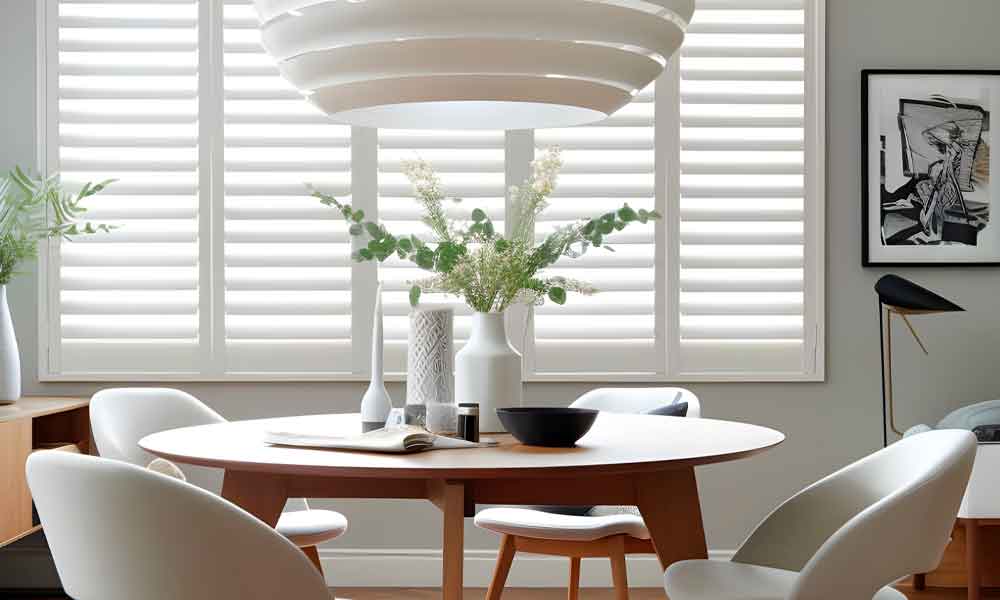Measuring & Fitting Included
Get an immediate price using our online estimator
Years’ of experience
Daytime, evening & weekend appointments
Retro Room Designs with Shutters Inspiration

Retro room designs have made a comeback in recent years, bringing a sense of nostalgia and charm to modern interiors. Incorporating elements from past eras can add character and personality to a space, and one way to enhance the retro aesthetic is by using shutters. Shutters not only provide privacy and control over natural light, but they also add a vintage touch to any room.
History of Shutters
Shutters have a long history in interior design, dating back to ancient Greece and Rome. Originally used for practical purposes such as ventilation and security, shutters have evolved over the centuries to become a decorative element in homes. They have been incorporated into various design styles, from traditional to contemporary, showcasing their versatility and timeless appeal.
Shutters have been a staple in architecture for centuries, with examples found in ancient Egyptian tombs and Roman villas. In the Middle Ages, shutters were used to protect homes from the elements and provide security. Over time, shutters became more ornate, featuring intricate designs and carvings that added a touch of elegance to windows.
The popularity of shutters surged during the Renaissance period, where they were seen as a symbol of wealth and status. Shutters were often adorned with decorative elements such as scrolls and floral motifs, showcasing the craftsmanship of the era. This tradition continued into the Baroque and Rococo periods, with shutters becoming a focal point in grand estates and palaces.
Incorporating Shutters in Retro Room Designs
When choosing shutters for a retro room, it’s important to select the right style and material to complement the overall design. Opt for wooden shutters with a distressed finish for a vintage look, or go for colorful shutters to add a pop of retro flair. Get creative with how you use shutters in the room – from using them as room dividers to creating a unique headboard, the possibilities are endless.
Consider incorporating shutters into the room’s color scheme by painting them in a bold hue that complements the rest of the decor. This can create a cohesive look that ties the room together and adds a playful touch. Additionally, experiment with different shutter sizes and configurations to achieve a custom look that suits your retro aesthetic.
To enhance the retro vibe, mix and match different shutter styles throughout the room. Consider installing shutters with louvers for a classic look, or opt for solid panel shutters for a more traditional feel. Play around with placement and angles to create visual interest and dimension in the space. By thinking outside the box, you can transform a room into a charming retro haven with the help of shutters.
FAQ
1. What is the history of shutters in interior design?
Shutters have a long history in interior design, dating back to ancient Greece and Rome. Originally used for practical purposes such as ventilation and security, shutters have evolved over the centuries to become a decorative element in homes.
2. How can shutters be incorporated into retro room designs?
When incorporating shutters into retro room designs, it’s important to select the right style and material to complement the overall design. Opt for wooden shutters with a distressed finish for a vintage look, or go for colorful shutters to add a pop of retro flair. Get creative with how you use shutters in the room – from using them as room dividers to creating a unique headboard.
3. What are some tips for using shutters in a retro room’s color scheme?
Consider painting shutters in a bold hue that complements the rest of the decor to create a cohesive look that ties the room together and adds a playful touch. Experiment with different shutter sizes and configurations to achieve a custom look that suits your retro aesthetic.
4. How can different shutter styles be mixed and matched in a retro room?
To enhance the retro vibe, mix and match different shutter styles throughout the room. Consider installing shutters with louvers for a classic look or opt for solid panel shutters for a more traditional feel. Play around with placement and angles to create visual interest and dimension in the space.

Natalie Johnson
With a keen eye for design Natalie is the Blinds Design Specialist at Custom Fitted Blinds. Dedicated to creating personalised solutions, she transforms spaces with creativity and expertise.
Blinds Range
Shutters Range
Important Links
© 2024 All rights reserved
Made with ❤ with Elementor
